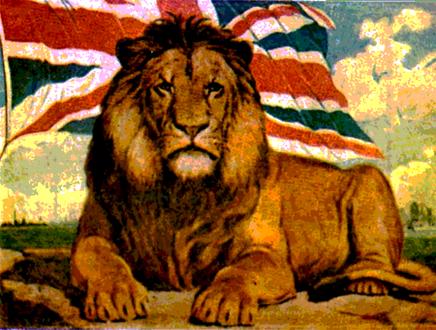
The growth of Britain as a world power was both a cause and consequence of the growth of government. The authority of the State became far more centralized and less focused on provincial power. This centralization was principally because the State needed far more money to sustain the costs of foreign ventures. Unlike its enemies, Britain used credit on a huge scale to fund its war efforts. The number of government employees had already risen to 12,000 by 1720, and this growth continued to 16,000 by 1760. The number of revenue officers alone increased from 2,500 in 1690 to over 8,000 in the eighteenth century. This reflected the fact that excise supplied 55 per cent of government income by 1733. The growing numbers of excise officers, rewarded and promoted on the basis of their ability, also contributed to the growth of a meritocratic society.
The income raised by this expanding bureaucracy was spent on the army and navy. Each capital ship cost tens of thousands of pounds to build, the equivalent of tens of millions today, and needed regular repairs. Few, if any, saw many battles, and more sailors died in storms and accidents than in warfare. In fact, in 1805 more sailors died in the storms a few days after Trafalgar than in the battle itself. By the 1740s Portsmouth dockyards employed 2,000 workers and the shipboard force of the navy reached 40,000. Even in times of peace the army rarely fell below 10,000.
The royal dockyards were a good example of the complex pre-industrial economy. Before 1720 there were 6,500 dockyard workers maintaining 430 ships at sea. The dockyards included dry docks and by 1720 the navy introduced prefabricated dock buildings for overseas naval bases. But at the end of the Napoleonic wars there were 17,500 dockyard workers supporting 900 ships. This growth of activity often had an impact on the local economy. Rope-making, for example, which was important for ships, was often ‘outsourced’ to local companies. In workhouses and prisons inmates picked oakum fibres from used ropes to make it into caulking, which waterproofed ships.
Once Britain had acquired colonial possessions, technological advances developed to support their maintenance. In 1795 the Admiralty formed a hydrographic department to draw up charts for the use of its ships. By 1819 these charts were made available to merchant vessels for a fee; by 1855 there were 1,981 charts, covering the whole earth. In 1802 the head of the hydrographic department, Rear Admiral Sir Francis Beaufort (1774–1857), established the Beaufort scale of wind speeds to help naval ships estimate the danger of weather conditions to shipping.
The popular perception of the armed forces varied. Without barracks, the army relied on billeting, which was unpopular, as were the taxes to pay for them. The country was always thrilled by accounts of the victories of its army and navy, and as a result the first signs of imperial jingoism can be seen in some of the popular ballads of this period. In contrast, the French were less heavily taxed than the British to pay for their armed forces, but resented it much more. Perhaps Britons had the consolations of victories and a sense of an open government in which criticism of waste was common.
The use of press gangs, often seen in films, was relatively rare, largely because volunteers were plentiful, but two-thirds of recruits were rejected as unsuitable, usually because of poor physique. The need for better-trained troops led to the formation of the Portsmouth Naval Academy in 1733 and the Woolwich Academy in 1741, the latter formed for ‘instructing the people of its Military branch to form good Officers of Artillery and perfect Engineers’. In time an officer class grew up, as in other professions, in which generations from the same families entered the army and navy.
During the eighteenth century the cultural expressions of patriotism and empire emerged. The Union Jack, which had been developed as a naval flag in the seventeenth century, was designated as the flag of the United Kingdom after the Act of Union in 1707, and in 1801 the addition of the cross of St Patrick gave the Union Jack its modern form. Unlike most foreign countries, Britain had a flag that symbolized the nation rather than that of its ruling dynasty. The display of the flag on uniforms, above buildings and on ships demonstrated national pride. ‘God Save the King’ also emerged in the eighteenth century. It was written by a Scot, James Oswald (1711–69), and performed to celebrate Admiral Vernon’s victory in 1739 at Porto Bello during the war with Spain. It became popular as a loyalist tune during the 1745 Jacobite rebellion and thereafter became the national anthem through an informal acceptance of its sentiments. In 1754 James Thomson’s (1700–48) tune ‘Rule Britannia’, which he had composed in 1740, was included in an entertainment called The Masque of Alfred. It was a confident and popular expression of British naval superiority. Britannia, who had appeared on coins as early as 1665, was also becoming a popular embodiment of the nation and of maritime dominance. Said to be modelled on one of Charles II’s mistresses, the image of Britannia as a woman ruler, with trident and shield, became an idealized counterpart of John Bull, who was often depicted in coarser forms.